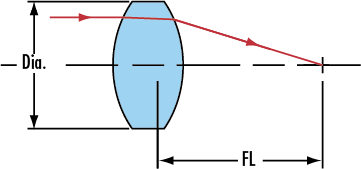무엇을 도와드릴까요?

Double-convex (DCX) lenses는 바깥쪽으로 휘어진 곡면 2개와 positive focal length를 갖고 있고 1:1 이미징 및 multi-element systems에 유용합니다.
15 - 19.9mm Experimental Quality Double-Convex (DCX) Lenses는 몇 가지 experimental grade 옵션으로 제공됩니다. Grade 1은 눈에 띄는 스크래치, 손상, 얼룩 또는 산화된 부분이 없고 날카로운 표준 광학 유리입니다. Grade 2는 약간의 손상, 가벼운 얼룩 또는 기타 결함이 있는 unedged, 비 광학 유리입니다. 가장자리 접착제가 아주 약간 분리되었을 수 있습니다.
참고: experimental grade optics용 규격은 표시되어 있는 것과 10% 정도의 차이가 있을 수 있습니다. 또한 제시된 것 이외의 어떤 추가 정보도 사용할 수 없습니다.

본사 및 지사별 연락처 확인하기
견적 요청 도구
재고 번호 입력 필요
Copyright 2023, 에드몬드옵틱스코리아 사업자 등록번호: 110-81-74657 | 대표이사: 앙텍하우 | 통신판매업 신고번호: 제 2022-서울마포-0965호, 서울특별시 마포구 월드컵북로 21, 7층 (서교동, 풍성빌딩)
The FUTURE Depends On Optics®